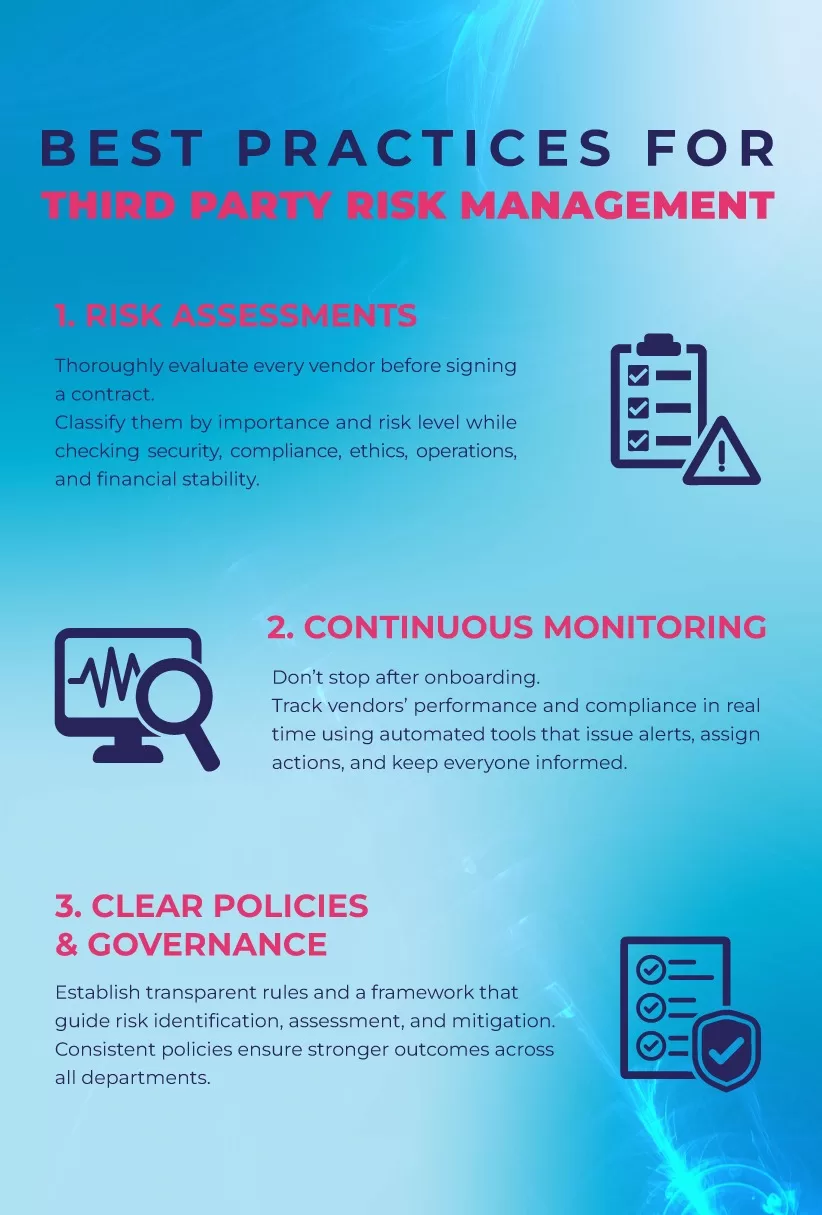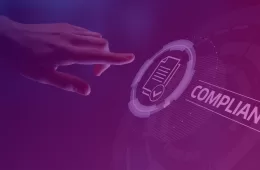
What is Third-Party Risk Management and Why Is It Important?
Nowadays, no company can afford to function independently in today’s highly interconnected corporate landscape. To keep operations running smoothly, businesses depend on a vast network of vendors, service providers, distributors, and partners. These partnerships enhance scale, efficiency, and innovation. However, they also introduce risks that organizations cannot fully control. A vulnerability at a third party can swiftly become an internal problem, impacting security, compliance, operations, and reputation.
Thus, third-party risk management has become an essential aspect of modern corporate strategy. By ensuring that external collaborations remain beneficial rather than detrimental, it provides a framework for identifying, assessing, and mitigating risks. The obvious question then becomes: how can companies maintain the benefits of these important collaborations while minimizing the risks?
What Is Third-Party Risk Management?
The purpose of third-party risk management (TPRM) is to identify, assess, and mitigate the impact of potential threats when working with external vendors, partners, and service providers.
TPRM is a crucial business approach in today’s interconnected and outsourced world. By systematically evaluating third parties, whether supply chain partners, IT providers, software developers, or customer support vendors, organizations can reduce exposure to operational, financial, reputational, and regulatory risks. This safeguards operations, data, and compliance.
Why Is Third-Party Risk Management Important?
Interactions with third parties can open the door to cyberattacks because of the sensitive information they access, such as client records and internal systems. Subcontractors and service providers hired by third parties (fourth parties) introduce yet another layer of risk.
Companies that focus only on their internal cybersecurity may strengthen their own defenses but still leave themselves exposed to serious threats. Unless these safeguards extend to third and fourth parties, vulnerabilities remain.
Key Risks of Working with Third Parties
Organizations are inherently exposed to hazards when they work with third parties. According to SecurityScorecard research, 98% of organizations worldwide have relationships with at least one breached third-party.
Cybersecurity is a major issue. Suppliers are a primary target for hackers because they handle sensitive data and have access to internal systems. All it takes is one security breach at a partner to cause data leaks, legal issues, and damage to your brand. In a famous instance from 2013, hackers broke into Target’s internal systems through a third-party HVAC vendor, Fazio Mechanical Services, stealing the credit card details of more than 40 million consumers
Regulatory compliance is another important concern. In order to comply with data privacy and protection regulations, companies must verify that their providers fulfill stringent requirements. A company might still incur significant penalties and damage to its reputation even if another entity is at fault. In 2020, for example, Blackbaud was involved in a security incident that exposed the donor data of thousands of schools and nonprofit organizations. As a result of insufficient data security and breach response, the company was forced to pay a $49.5 million settlement with 49 states and the District of Columbia.
Lastly, significant disruptions to operations might be caused by failures of other parties. Problems with suppliers, service interruptions, or product quality have a domino effect on the rest of the company, lowering productivity, dissatisfied customers, and bottom-line results. The worldwide semiconductor scarcity of 2021 is a prime example; as a result of problems at their third-party chip suppliers, manufacturers like Ford had to reduce production of its best-selling F-150 pickups, costing them an estimated $1 billion to $2.5 billion.
Benefits of Third-Party Risk Management
Significant benefits can be achieved through well-managed third-party risk management.
- Stronger security: An organization’s defenses are reinforced and its attack surface reduced when vendor cybersecurity controls are extended. This makes it harder for attackers to exploit gaps. For instance, after the 2020 SolarWinds supply chain attack, Microsoft accelerated its transition to a Zero Trust model, quickly identified and removed the Sunburst malware, and promoted multi-factor authentication (MFA) and identity monitoring across its vendor ecosystem.
- Regulatory compliance: By ensuring vendors uphold the same high standards required of the company, TPRM helps organizations demonstrate accountability and reduce the risk of costly violations. Regular assessments, due diligence, and monitoring are essential.
- Operational resilience: Effective TPRM supports business continuity. By identifying weak spots in advance and taking proactive measures, organizations can minimize downtime and maintain productivity during disruptions.
- Reputation and trust: Well-managed vendor relationships reassure stakeholders and customers of the company’s reliability. Assessing partners for their security and ethical standards safeguards brand reputation and strengthens long-term business ties.
Best Practices for Third-Party Risk Management
The most important step in managing third-party risk is having a plan. With top-down support and cross-departmental collaboration, organizations can better integrate TPRM into overall risk management strategies. Procurement, security, compliance, and operations teams all play a role. Clear, consistent policies are far more effective than siloed approaches.

- Thorough risk assessments: During contracting, conduct due diligence on all suppliers, maintain a comprehensive vendor inventory, and categorize vendors by risk level. Contracts should include performance, compliance, and security requirements from the start. These evaluations should also consider environmental impact, ethics, operational reliability, and financial stability.
- Ongoing monitoring: Once vendors are onboarded, continuous monitoring is critical. Real-time tracking of compliance, performance, and security posture is more effective than one-off inspections. Automated TPRM platforms can streamline this by issuing alerts, assigning mitigation tasks, and generating reports.
- Strong policies and governance: A well-defined TPRM framework ensures consistency and repeatability. It should establish clear criteria for identifying, assessing, and mitigating risks, and be adaptable to the organization’s risk tolerance and regulatory landscape.
Organizations looking to grow in today’s collaborative, outsourcing-driven economy must adopt robust third-party risk management strategies. By identifying risks and addressing them proactively through assessments, monitoring, and clear policies, companies can ensure compliance, strengthen security, ensure operational resilience, and build long-term credibility and trust
Above all, TPRM enables sustainable growth and success in an environment where third parties are inseparable from core business activities. Companies should evaluate their current third-party relationships, address weaknesses, and establish a systematic TPRM program immediately.








